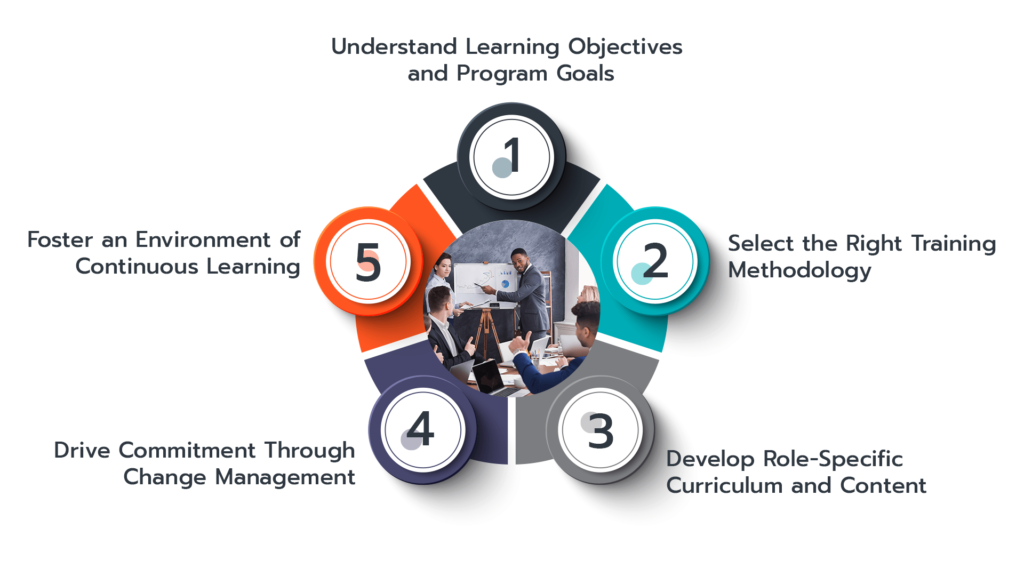Business Management Software: An Ultimate Guide For You To Use it Right

Businesses today can only compete and get ahead using the right set of advancements for themselves. It helps them enhance their production and delivery significantly to beat their rivals. So, it would help if you had the right business management software that allows organizations to streamline operations and boost productivity multiple-fold. It can help them gain valuable insights and make the right decision as well.
But you can only make the most out of these tools if they are implemented correctly. That is why we are here to help you with the post that covers how you can make the most out of your business management software. We also will talk about how you can have your team in sync with the best business management software by following the best practices. Let’s get started with the first chapter.
Chapter 1: Getting the Most Out of Your Business Management Software: Advanced Tips and Tricks
Below are the aspects that can help you make the most of business management software. Check it out:
Consolidate Tools into an Integrated Platform
One of the biggest mistakes organizations make is relying on distinct tools for various functions like CRM, marketing automation, project management, etc. It leads to data silos and inefficiencies. An integrated platform houses all related modules, workflows, and analytics in one place. It eliminates duplication, facilitates collaboration, and provides a unified view of customers, projects, and performance. Look for an all-in-one solution instead of piecemeal tools to streamline operations. Integrated platforms also offer better customization and automation capabilities for advanced usage.
Set Up Customized Views and Dashboards
Business Management software offers different pre-configured views and dashboards. However, to derive optimal insights, configure views and dashboards specific to your business needs. Create role-based personalized dashboards with widgets displaying KPIs relevant to different roles. For example, a sales dashboard can show metrics like leads generated, converted opportunities, revenue, etc. Similarly, a marketing dashboard can track campaign performance, ROI, customer acquisition cost, and more. Configure advanced filter-based views to track progress by different attributes. This allows tracking metrics in granular ways for informed decision-making.
Leverage Automation Extensively
Automation is a key strength of modern business software. However, its capabilities often need to be more utilized. Study your workflows thoroughly and identify tasks that can be automated fully or partially. For example, automatically assign leads based on attributes, schedule follow-ups, capture form submissions, update records, send targeted communications, run reports, and more. Reduce manual efforts through built-in automation features or create custom automated workflows using tools like IFTTT. Leverage advanced tools like macros and workflows to codify standard operating procedures, ensuring consistency and compliance. Such extensive automation liberates team bandwidth for more strategic functions.
Integrate with Other Tools
While an integrated platform takes care of core functions, additional integrations are often needed. Study tools used across your technology stack and integrate management software accordingly. For example, integrate with G Suite/Office 365 for a unified communication interface. Integrate with accounting tools to sync financial data. Integrate with help desk/support software to maintain customer support tickets. Look for open API availability to customize integrations as per your unique requirements. Carefully planned integrations deliver seamless data exchange, eliminating data entry work.
Optimize Processes with Triggers and Conditions
Automation is truly powerful when it can adapt to changing scenarios in real time. Leverage features like triggers and conditions to codify complex automated workflows and processes. For example, trigger an automated series of emails, calls, or tasks when a lead qualifies or becomes an opportunity. Trigger actions when an invoice is overdue or a project reaches a specific stage. Trigger follow-ups on missed appointments. Leverage conditions to skip, add, or modify steps based on parameters. Such conditional automation accommodates diverse scenarios without human intervention.
Chapter 2: How to Train Your Team on Business Process Management Practices
Now, let’s have a look at the approach we can take to train the team on Business Process Management practices.

Understand Learning Objectives and Program Goals
The first step involves understanding learning goals. Define how the training intends to impact roles, processes, and KPIs. Determine target competencies and skill sets for different teams. For example, sales teams may need proficiency in lead management and forecasting tools, while support staff requires training on ticketing systems. These goals will dictate the curriculum design and implementation strategy. Communicate program objectives clearly to all stakeholders.
Select the Right Training Methodology
Training methodologies like classroom, online, or blended learning suit different contexts. Classroom training is best for complex skills, while e-learning works for basic conceptual understanding. Blended learning combining both offers flexibility. Additionally, focuses on experiential learning through hands-on projects, simulations, and on-the-job training. Gamify learning wherever possible through competitions and leaderboards. Leverage engaging multimedia, interactive sessions, and self-paced modules. Training should promote long-term behavioral changes, not just cognitive understanding.
Develop Role-Specific Curriculum and Content
Design curriculum mapping competencies with learning outcomes and assessments. Customize content per job roles and skill levels. Curate role profiles, process manuals, demonstrations, tool guides, quizzes, reflective assignments, projects, etc. Adopt adult learning principles – relate new concepts to existing knowledge and experiences through case studies and scenarios. Content should be crisp, interactive, and available both online and offline. Gamify learning through quests, badges, and leaderboards to maximize engagement. Evaluate effectiveness through pre- and post-training surveys and assessments.
Drive Commitment Through Change Management
Resistance to new concepts and workflows is common. Effective change management addresses these barriers through communication, workshops, and ongoing support. Explain BPM concepts and their organizational benefits clearly. Promote active participation through ideation workshops, feedback sessions, and pilot initiatives for ownership. Address concerns and provide reassurance. Recognize early adopters to garner social proof. Pair new users with experts through buddy programs. Reinforce concepts through refresher workshops and on-the-job coaching. Such measures drive user commitment for long-term success.
Foster an Environment of Continuous Learning
True process expertise evolves through continuous learning, practice, and knowledge exchange. Provide ongoing mentoring, communities of practice, and informal discussions beyond initial training. Institutionalize feedback cycles, process reviews, and iterative improvements. Highlight success stories and recognize contributions regularly. Encourage certification pursuits. Align learning goals to performance metrics and career growth opportunities. This culture retains talent, ensures skills remain relevant, and maximizes learning transfer.
Are you Looking for a Robotic Process Automation Service So, Click and find the best service.
Final Thoughts
This concludes the post that talks about advanced tips to maximize value from business management software and train teams effectively on BPM practices. A carefully planned and continuously optimized approach delivers enduring productivity benefits through streamlined processes, informed decision-making, automation, and a culture of continuous learning. Good luck!
ALL{ "26156": { "ID": 26156, "post_author": "1", "post_date": "2024-06-19 08:49:34", "post_date_gmt": "2024-06-19 08:49:34", "post_content": "", "post_title": "How-to-Train-your-Team-min", "post_excerpt": "", "post_status": "inherit", "comment_status": "", "ping_status": "closed", "post_password": "", "post_name": "how-to-train-your-team-min", "to_ping": "", "pinged": "", "post_modified": "2024-06-19 08:49:34", "post_modified_gmt": "2024-06-19 08:49:34", "post_content_filtered": "", "post_parent": 25916, "guid": "https:\/\/uem.ysa.mybluehost.me\/website_1024c158\/wp-content\/uploads\/2024\/06\/How-to-Train-your-Team-min.png", "menu_order": 0, "post_type": "attachment", "post_mime_type": "image\/png", "comment_count": "0", "filter": "raw" }, "26034": { "ID": 26034, "post_author": "1", "post_date": "2024-06-17 05:50:54", "post_date_gmt": "2024-06-17 05:50:54", "post_content": "Business Management Software", "post_title": "Business Management Software-min", "post_excerpt": "Business Management Software", "post_status": "inherit", "comment_status": "closed", "ping_status": "closed", "post_password": "", "post_name": "business-management-software-min", "to_ping": "", "pinged": "", "post_modified": "2024-06-17 05:54:34", "post_modified_gmt": "2024-06-17 05:54:34", "post_content_filtered": "", "post_parent": 25916, "guid": "https:\/\/uem.ysa.mybluehost.me\/website_1024c158\/wp-content\/uploads\/2024\/06\/Business-Management-Software-min.png", "menu_order": 0, "post_type": "attachment", "post_mime_type": "image\/png", "comment_count": "0", "filter": "raw" } }
IMG
{ "26034": { "ID": 26034, "post_author": "1", "post_date": "2024-06-17 05:50:54", "post_date_gmt": "2024-06-17 05:50:54", "post_content": "Business Management Software", "post_title": "Business Management Software-min", "post_excerpt": "Business Management Software", "post_status": "inherit", "comment_status": "closed", "ping_status": "closed", "post_password": "", "post_name": "business-management-software-min", "to_ping": "", "pinged": "", "post_modified": "2024-06-17 05:54:34", "post_modified_gmt": "2024-06-17 05:54:34", "post_content_filtered": "", "post_parent": 25916, "guid": "https:\/\/uem.ysa.mybluehost.me\/website_1024c158\/wp-content\/uploads\/2024\/06\/Business-Management-Software-min.png", "menu_order": 0, "post_type": "attachment", "post_mime_type": "image\/png", "comment_count": "0", "filter": "raw" }, "26156": { "ID": 26156, "post_author": "1", "post_date": "2024-06-19 08:49:34", "post_date_gmt": "2024-06-19 08:49:34", "post_content": "", "post_title": "How-to-Train-your-Team-min", "post_excerpt": "", "post_status": "inherit", "comment_status": "", "ping_status": "closed", "post_password": "", "post_name": "how-to-train-your-team-min", "to_ping": "", "pinged": "", "post_modified": "2024-06-19 08:49:34", "post_modified_gmt": "2024-06-19 08:49:34", "post_content_filtered": "", "post_parent": 25916, "guid": "https:\/\/uem.ysa.mybluehost.me\/website_1024c158\/wp-content\/uploads\/2024\/06\/How-to-Train-your-Team-min.png", "menu_order": 0, "post_type": "attachment", "post_mime_type": "image\/png", "comment_count": "0", "filter": "raw" } }
[]
BPMN
[]
